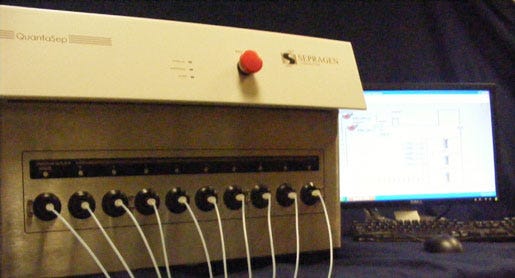Navigating Protein Purification Systems and Columns: A Comprehensive Guide

Protein purification is an essential step in biochemistry, biotechnology, and pharmaceutical research, as it allows researchers to isolate and analyze specific proteins for further study. There are various methods of protein purification, including chromatography, centrifugation, and precipitation. Among these methods, chromatography is the most widely used due to its high specificity, selectivity, and sensitivity.
Chromatography utilizes a stationary phase and a mobile phase to separate the components of a mixture based on their physical or chemical properties. In protein purification, the stationary phase is typically a resin-packed column, and the mobile phase is a buffer solution that flows through the column, carrying the proteins of interest.
Protein purification systems and columns come in various types and configurations, depending on the specific requirements of the researcher. Here are some of the commonly used systems and columns in protein purification:
- Affinity chromatography: Affinity chromatography is a highly specific and efficient method for purifying proteins based on their specific interactions with ligands. In this method, the stationary phase contains a ligand that specifically binds to the protein of interest. The most commonly used affinity columns include immobilized metal ion affinity chromatography (IMAC), protein A, protein G, and glutathione-Sepharose.
- Size exclusion chromatography: Size exclusion chromatography (SEC) separates proteins based on their size and shape. In this method, the stationary phase contains porous beads that allow smaller molecules to enter the beads, while larger molecules elute first. SEC is often used for desalting and buffer exchange of protein samples.
- Ion exchange chromatography: Ion exchange chromatography separates proteins based on their charge. In this method, the stationary phase contains a charged resin that binds to proteins with opposite charges. Ion exchange chromatography is often used for purifying proteins with specific isoelectric points.
- Hydrophobic interaction chromatography: Hydrophobic interaction chromatography (HIC) separates proteins based on their hydrophobicity. In this method, the stationary phase contains a hydrophobic resin that binds to proteins with hydrophobic patches. HIC is often used for purifying proteins with exposed hydrophobic surfaces.
- Multi-modal chromatography: Multi-modal chromatography combines different chromatographic principles to provide higher selectivity and resolution. The most commonly used multi-modal column is the mixed-mode ion exchange column, which combines ion exchange and hydrophobic interaction chromatography.
In summary, protein purification systems and columns are critical tools for separating and purifying proteins for further study. By selecting the appropriate chromatographic method and column for a given protein, researchers can achieve high purity and yield of their protein of interest.
.jpg)

.jpg)
Comments
Post a Comment